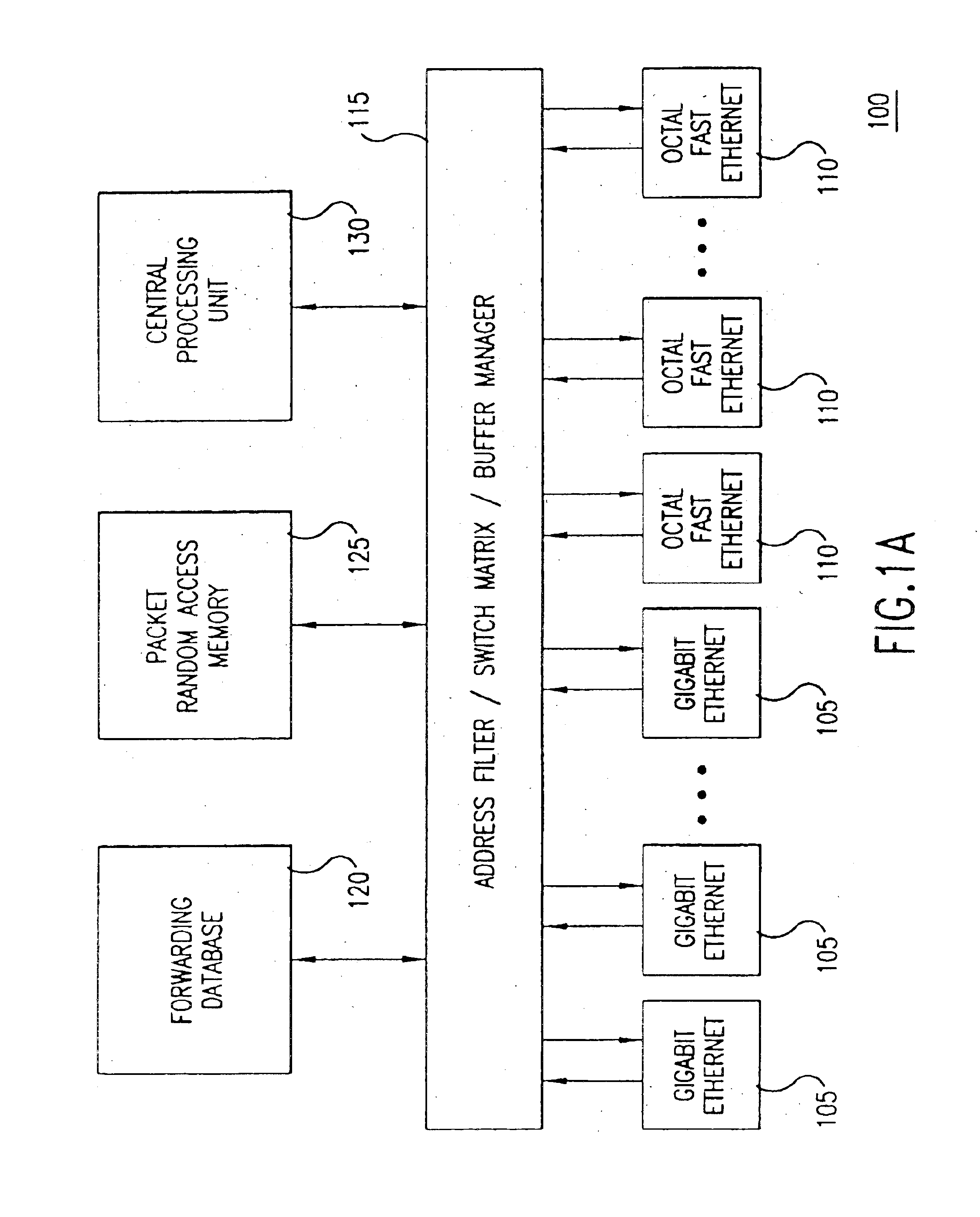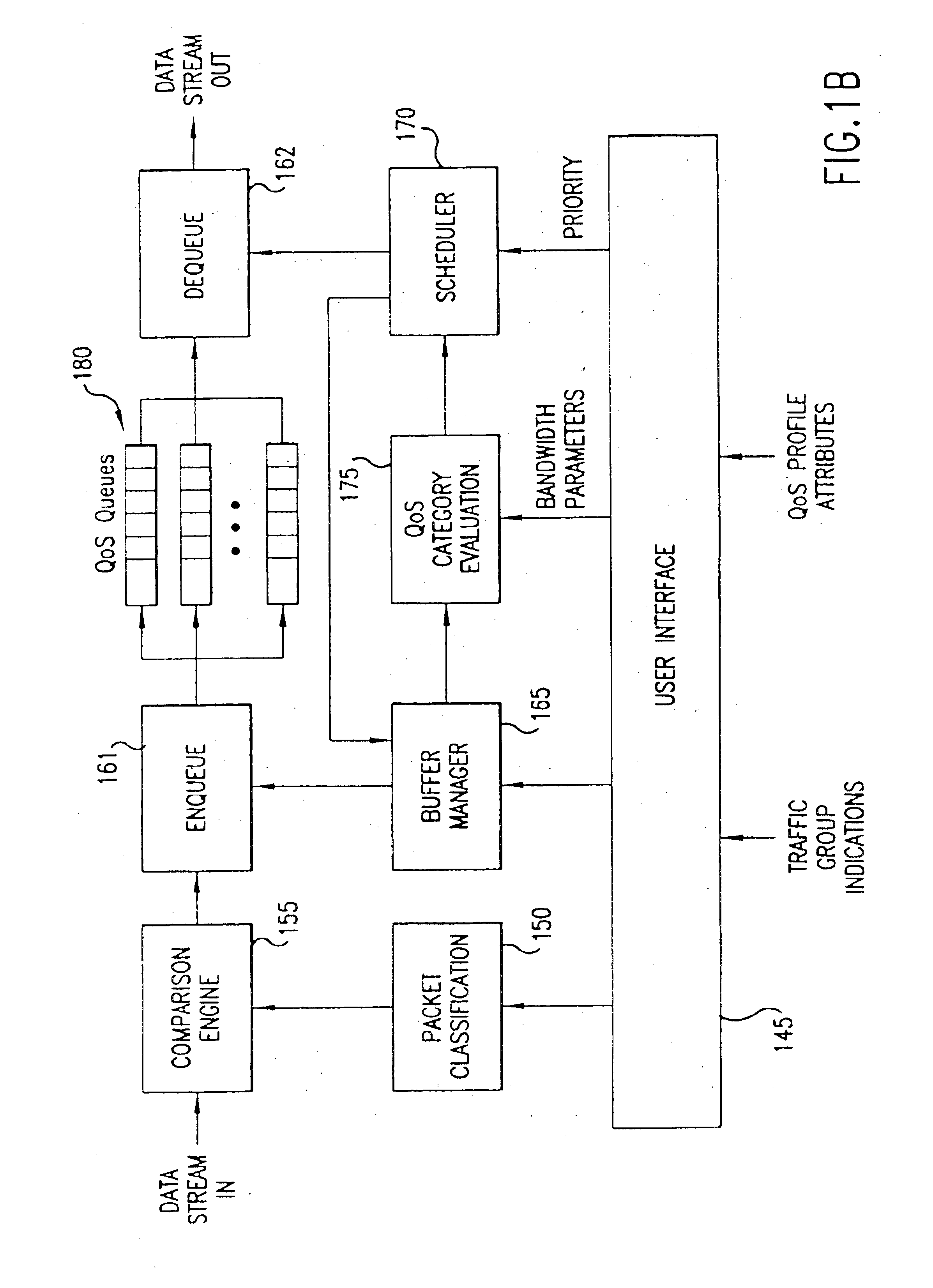Policy based quality of service
a technology of policy and service, applied in the field of policy based quality of service, can solve the problems of application using rsvp may reserve and consume resources, increase network speed and bandwidth alone will not meet the high demands of today's intranet, and increase network traffic and bandwidth alon
- Summary
- Abstract
- Description
- Claims
- Application Information
AI Technical Summary
Benefits of technology
Problems solved by technology
Method used
Image
Examples
Embodiment Construction
[0022]A flexible, policy-based, mechanism for managing, monitoring, and prioritizing traffic within a network and allocating bandwidth to achieve true Quality of Service (QoS) is described. “Quality of Service” in this context essentially means that there is a quantifiable measure of the service being provided. The measure of service being provided may be in terms of a packet loss rate, a maximum delay, a committed minimum bandwidth, or a limited maximum bandwidth, for example.
[0023]In the present invention, a number of QoS queues may be provided at each port of a packet forwarding device, such as a Local Area Network (LAN) switch. Based upon a set of QoS parameters, various types of traffic can be distinguished and associated with particular QoS queues. For example, packets associated with a first traffic group may be placed onto a first QoS queue and packets associated with another traffic group may be placed onto a second QoS queue. When a port is ready to transmit the next packe...
PUM
 Login to View More
Login to View More Abstract
Description
Claims
Application Information
 Login to View More
Login to View More - R&D
- Intellectual Property
- Life Sciences
- Materials
- Tech Scout
- Unparalleled Data Quality
- Higher Quality Content
- 60% Fewer Hallucinations
Browse by: Latest US Patents, China's latest patents, Technical Efficacy Thesaurus, Application Domain, Technology Topic, Popular Technical Reports.
© 2025 PatSnap. All rights reserved.Legal|Privacy policy|Modern Slavery Act Transparency Statement|Sitemap|About US| Contact US: help@patsnap.com



